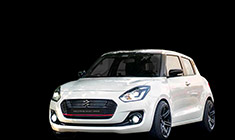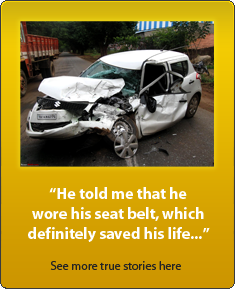News
The 10 commandments of driving safely in India
You can assess your own abilities and performance on the road and away from it (on private pathways), with the help of a friend as necessary. The repeated practice would ensure that your basic skills while driving are honed to perfection.
BHPian SS-Traveller recently shared this with other enthusiasts.
Driving a car is apparently easy. You get yourself a driving licence after appearing for a short 15- or 20-minute test (add a few hundred ₹ and you are through in even less time), and you are ready to drive from one end of the country to another. But driving safely, as opposed to just driving, is a different matter altogether, and takes years of training, practice and self-evaluation.
So here's a list of The Ten Commandments, as I like to call them, that should make you a much safer driver on our roads. You can assess your own abilities and performance on the road and away from it (on private pathways), with the help of a friend as necessary. The repeated practice would ensure that your basic skills while driving are honed to perfection.
The First Commandment
Sit in your car, ensure all the doors are closed, set up the seats and mirrors, and ensure that all occupants (front AND rear) wear seat belts
Here are videos of how to set up your seat and mirrors:
The Second Commandment
Familiarize yourself in YOUR stationary car, to be able to BLINDLY shift gears and use all controls
Close your eyes (better still, blindfold yourself) in a stationary car without the engine running, and ask a friend to call out gear numbers 1 to 5/6, neutral & reverse in random order. As s/he does that, you should be able to:
- depress the clutch,
- remove the right foot from the accelerator pedal,
- shift into appropriate gear as called out, and
- release the clutch pedal while reapplying pressure to the accelerator pedal
You should BLINDLY be able to turn on/off all the lights, use the low and high beams, use the turn indicator and wiper controls, increase/reduce ICE volume, adjust the AC controls, and use cruise control and other steering mounted buttons by touch, without looking at them.
This is your own car you would be regularly driving, so you need to be familiar with it. In an unfamiliar car that you are driving for the first time (such as a rental or test drive car), make sure you are conversant with the layout of all the controls before you start driving.
The Third Commandment
Start and move the car SMOOTHLY in 5 seconds or less
Get a friend to time you with a stopwatch. This should be done on both flat surfaces and on mild to moderate upward slopes, both forward and in the reverse directions. On slopes, you are allowed to use the handbrake, but you must disengage it fully as soon as you begin to move.
If you:
- jerk the car or stall, or
- roll the other way before starting to move the car, or
- you over-rev the car and slip the clutch unnecessarily,
you need to practise this a lot more than you think. If you cannot do this, you should not be driving on a public road.
The Fourth Commandment
Stop the car IMMEDIATELY with a sudden "STOP" command from your friend, without stalling the car
You should always be alert to a sudden requirement to carry out an emergency stop, and you cannot stall the engine when you do so (and nor should you depress the clutch pedal at the same time as the brake pedal). Only after the car slows should you depress the clutch pedal, to prevent stalling.
The Fifth Commandment
ALWAYS glance at the mirrors (both IRVM & ORVM) when your foot moves to the brake pedal
Always scan the mirrors and the dashboard every few seconds (ideally every 3-5 seconds, for a duration of less than 1 second) while driving.
Move your head to either side for a quick glance at the ORVMs, and do not try to use the corners of your eyes (peripheral vision) to scan the mirrors. Your peripheral vision produces a blurred image that your brain often does not interpret as a danger sign.
The Sixth Commandment
You must be able to maintain a constant speed - especially slow speeds - even on an empty road
Practise driving at a constant & steady speed, such as 10 km/h or 25 km/h, on an empty stretch of road. Anyone can push down the accelerator pedal and go very fast on an empty road. The skill lies in controlling your speed and developing your patience. How well you can modulate the pressure on the accelerator pedal to constantly maintain that speed while checking the speedometer, is critical to your safety.
Do not use cruise control or speed limiter functions on your car to practise this skill.
The Seventh Commandment
You must be able to position your vehicle between lane markings at all times while driving
It is not as easy as you think. On a long stretch of highway, there will be very few vehicles (other than long-distance lorries) that can and will maintain the position of their vehicles in the middle of two white lines, especially around curves and turns. Most drivers in India straddle lanes as if the white lines are some sort of monorail for them to drive on.
Whenever changing lanes or making a turn, you MUST turn on the indicator on the appropriate side.
The Eighth Commandment
You should be able to park quickly (under 15-20 seconds) and properly (both parallel park and reverse perpendicular park)
Here are a couple of videos about how to parallel park:
...and a couple of videos of how to reverse perpendicular park:
Ask your friend to time you with a stopwatch, while you perform the manoeuvre.
The Ninth Commandment
Maintain your Crash Avoidance Space (CAS)
You can read about CAS in detail in this post (The Art of Following & Changing Lanes safely), which is also quoted here:
Leave enough CAS to avoid a CrASh
CAS stands for Crash Avoidance Space
So how much CAS is optimal?
Front: The gap is measured in seconds, not metres. Most of us know this already, but how many seconds?
- 1.5 seconds at 40 km/h
- 2 seconds at 60 km/h
- 2.5 seconds at 80 km/h
- 3 seconds at 100 km/h
Since the distance varies with speed and surrounding moving traffic, this is called the dynamic CAS. Static CAS was mentioned in the previous post.
Add 1 second for each additional hazard:
- Night driving
- Sand, gravel or rain (wet road)
- Tired driver (you)
- Poor visibility (rain)
- Fog (refer to the separate thread at this link)
- Rear: Equal gap as in the front. Though this is the responsibility of the driver coming up behind, one can compensate for tailgaters by adding a similar interval in front of one's own car.
- Sides (Lateral CAS): Enough space to open one's doors wide at all times (at least 1 metre on both sides). Never squeeze through gaps at speed, and never stop at a traffic light, leaving no space to open doors and get out.
- DO NOT overtake between two vehicles when there is insufficient lateral CAS. It is wiser to wait till you can leave sufficient CAS before passing both vehicles. Watch how the gap is too little between the two trucks but opens up later.
- Lateral CAS on the highway saves you from potential crashes in case of sudden unexpected lane intrusions.
Tip: To count the seconds, say "one thousand and one, two thousand and one, three thousand and one..." to yourself. We can comfortably utter 4 syllables per second. Even "one banana, two bananas, three bananas..." will do.
The Tenth Commandment
Do not handle a mobile phone while in control of a moving vehicle
The Indian laws ban the use of mobile phones other than for navigation, but they don't appear to clarify that a mobile device must be firmly mounted on a holder on the dashboard close to eye/windscreen level, even for navigation purposes.
Do not touch your mobile phone while the car is in motion, and you are driving, whether to answer or disconnect a call, read a text, change the music, or change navigation settings. Stop the car before touching the phone. Get a proper mount that holds your phone such that you do not need to remove your eyes from the road to see the navigation screen.
Check out BHPian comments for more insights and information.
- Tags:
- Indian
- Member Content
- safe driving

















